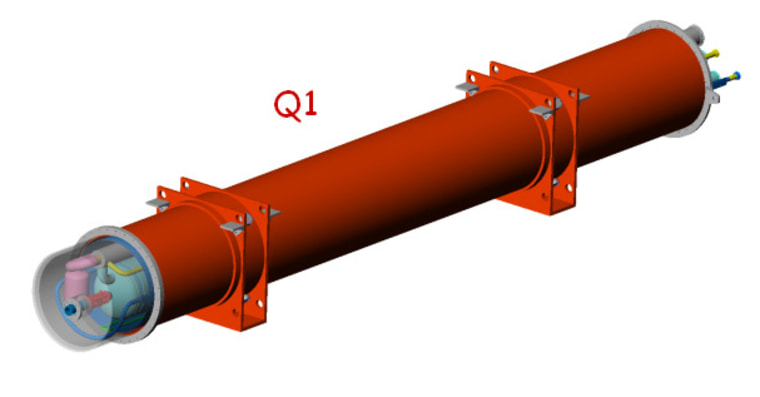A 43-foot-long (13-meter-long) magnet for the world’s largest particle collider broke “with a loud bang and a cloud of dust” during a high-pressure test, and officials said Tuesday they are working to find a replacement part.
The part that failed March 27 was in a supercooled magnet designed to focus streams of protons so that they collide and allow scientists to study the results of the collision, giving them a better understanding of the makeup of matter, according to Fermilab, based in suburban Chicago, which has an accelerator of its own and is helping build one deep beneath the Swiss and French countryside outside Geneva.
Fermilab, which built the magnet for the 17-mile (27-kilometer) circular collider, said its teams, working with colleagues from the European Organization for Nuclear Research, have determined what caused the “serious failure” and are working on a solution.
Scientists are hoping that the Large Hadron Collider can begin operation late this year.
“It’s impossible really to say whether that can be maintained at this stage,” said James Gillies, spokesman for the European group, known by the French initials CERN. But, he added, “everything else is going as if we’re still heading for the schedule of this year.”
In a statement posted on its Web site, Fermilab said the failure that broke a glass cloth-epoxy laminate support resulted from a test of “asymmetric” or irregular force. Subsequent testing showed that the support was inadequate to withstand the longitudinal forces, which had been overlooked in the design process.
Fermilab said it hoped that the redesign and repair can be completed without delaying the startup of the Large Hadron Collider, which has been under construction for years.
“We took a pratfall on the world stage,” said Pier Oddone, director of the lab, which has its own, smaller collider at Batavia, Ill. “We are dumbfounded that we missed some very simple balance of forces.”
The aim of the CERN experiment is to make subatomic particles — in this case protons — travel at nearly the speed of light until they collide, emitting a shower of even smaller particles that will reveal mysteries about the makeup of matter.
There will also be hundreds of other, smaller magnets in the circular tunnel, which is big enough for a subway train and lies 160 to 500 feet (50 to 150 meters) to under the Swiss-French border, CERN said.
The collider is replacing a less-powerful model that was removed from the tunnel in 2000. Estimates of the project's cost range from $1.8 billion to $8 billion, depending on which expenses are counted.
The collider's magnets will be cooled to a temperature of 456 degrees below zero Fahrenheit (2 degrees Kelvin) so that they can convey extremely high currents without any loss of energy, enabling them to control the path of the protons, which are 2,000 times heavier than the much more easily directed electrons that were used in the earlier accelerator.
This report was supplemented by information from MSNBC.com.
